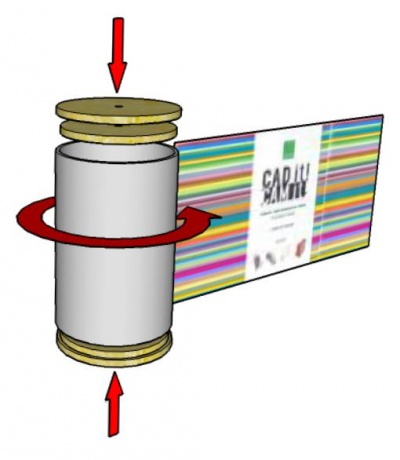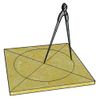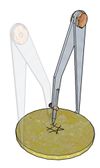String Tidy
From DT Online
What to Make:
Design, make and decorate a small round container to hold a ball of string ready for use.
What to Use:
Good quality card tube can be cut to length for the body (e.g. postal tubes)
Ready cut wooden discs can be used for the ends (or use plastic and caps for postal tubes)
Plastics tube can also be used (e.g. rainwater pipes)
Decoration can be applied by wrapping around a computer print-out, applying shapes cut out of self-adhesive plastics, decoupage, or paint.
Things to find out and think about:
- Collect small boxes and containers to look at how they are made and how their lids fit.
- How big should the container be? You will need to measure some balls of string
- What size of string will be stored?
- How will the container be filled and emptied?
- Will the container be used outside (e.g. in the garden) and if so, will it need to be weatherproof?
- How will the string be drawn out of the container?
- How will the string be cut to length?
Some ideas:
String from hole in top
Top built up
String from slot in top near edge or tube near top
String from hole in side – for bobbins instead of balls
Ways of Making:
| Find a length of tube which is big enough to hold a ball or bobbin of string. Check that the end is ‘square’ by standing it upright on a flat surface and holding a Try Square against it.
Note: ‘Squareness’ is a word used by engineers to describe something which is a right angles or 90 degrees. They might perform a similar test using a Surface Plate and Try Square |
|
| Decide how long to cut the tube (don't forget to allow for the top and botom fitting into the tube). Stand the tube upright on a flat surface together with a block or wood or similar with a height equal to the length of tube to be cut (less half the diameter of a pencil if you wish to be exact). Hold the pencil on top of the wood block and rotate the tube to draw a cutting line around it.
Note: Engineers would use a Surface Guage for very accurate work, or a Scribing Block to mark lengths along bars and tubes. |
|
| It may be possible to hold smaller diameter tubes (e.g. less than 50mm dia.) against a Bench Hook whilst it is being cut using a Junior Hacksaw. Slowly rotate the tube as it is cut along the marked out line.
Note: The Bench Hook could be held in a Carpenters Vice to make it more secure. |
|
| Larger diameter tube may be better held in an Engineers Vice whilst it is being sawn. | |
| The tops and bottoms of the tube container can be made out of discs of MDF or Ply or similar. Choose a thickness of about 6mm for most purposes and mark out the required diameter using a Pencil Compass.
Note: Engineers would use Dividers and a Carpenter might use a Wing Compass to do this. |
|
| They may also use Odd Leg Calipers to find the centre of a disc with an unknown centre (e.g. if using discs which have been Stamped or Punched out of a sheet)
|
|
| Discs maked out on MDF or Ply can be cut out using a Scroll Saw or the work may be held in a Vice and cut out by hand using a Coping Saw | |
| A number of discs will be needed to make the String Tidy: two for the top and one or two for the bottom. The top discs are glued together to make a lid so one needs to be the outside diameter of the tube and another made to be a snug fit on the inside of the tube. The discs can be finished to size by hand using Files or more accurately using a Disc Sander. The bottom of the tube can be filled the same way or by gluing a single disc to the inside.
Note: If available, a small Lathe would be the most accurate way of fitting discs to suit the tube. Either mount the disc on a Mandrel or grip the disc against a pad held in the Chuck using a Rotating Centre . |
[[File:###|200px|right]] |
| A decorative wrapper can be made by Colour Printing a rectangle with a length equal to the Circumference of the tube used and width equal to the tube length.
Note: For some practical purposes, the Circumference can be estimated by simply multiplying the diameter by three. This is a little less than it should be but if the wrapper is glued with water based glue it is likely to stretch slightly and fit. |
[[File:###|200px|right]] |
Testing:
- Is the top easy to remove?
- How can it be made easier?
- Is the top secure?
- How could it be fixed more firmly?
- Does the box hold a good range if string products?
- Can the string be dispensed without the ball or bobbin getting tangled?
- Does your decoration make it clear what is inside?
Further Work:
Applique decoration to top
Add a means of cutting the string or twine
See also making cylindrical containers







